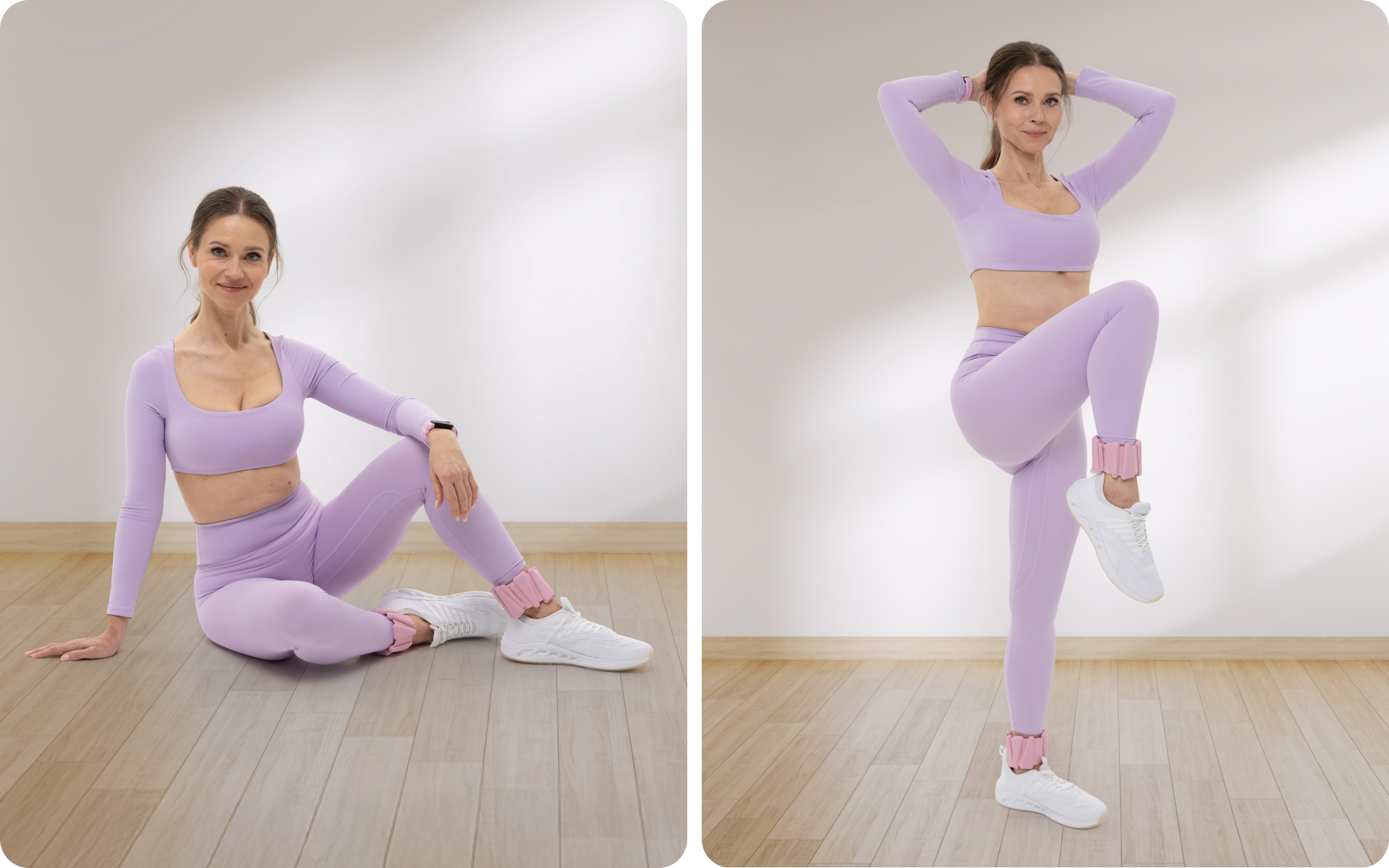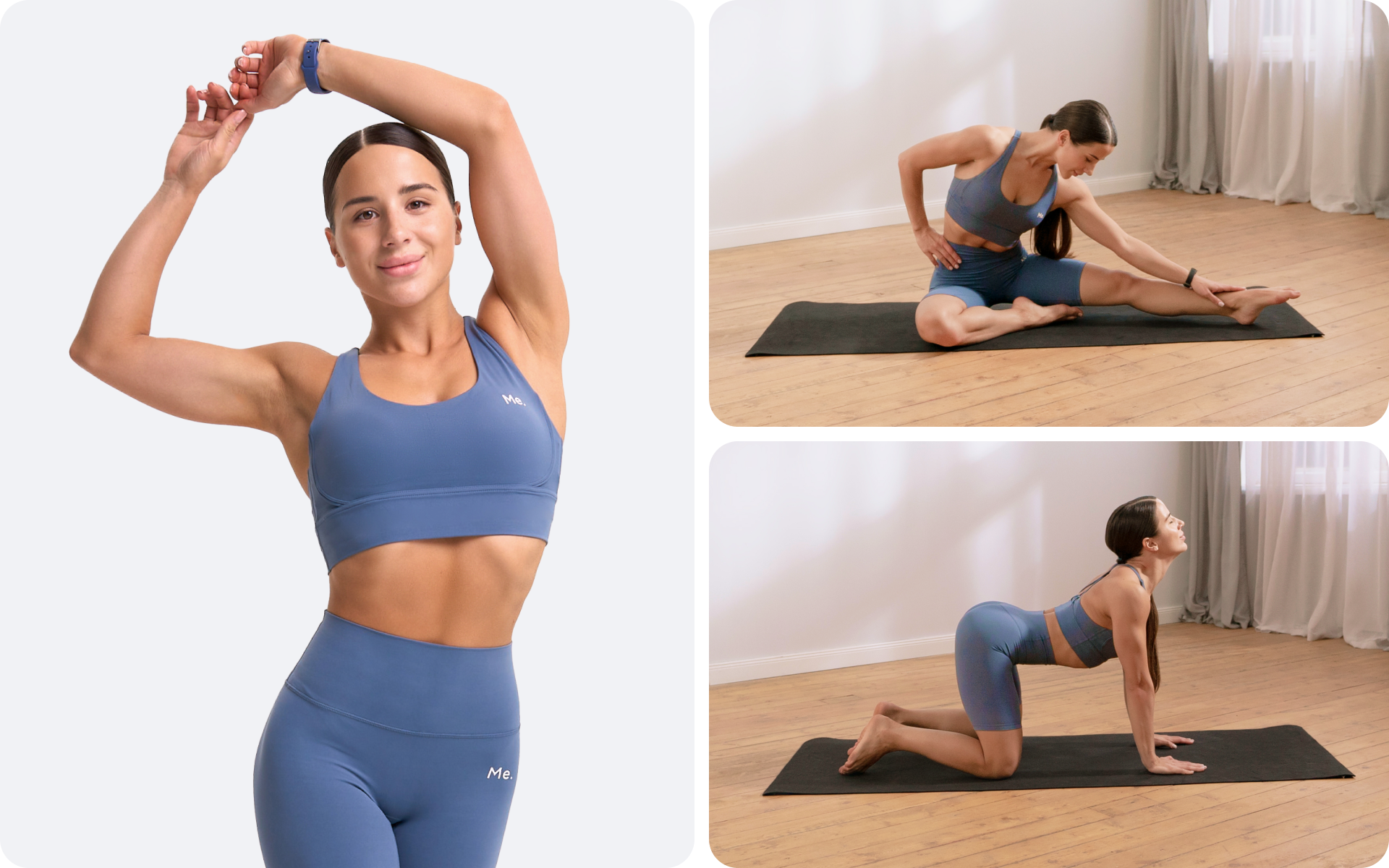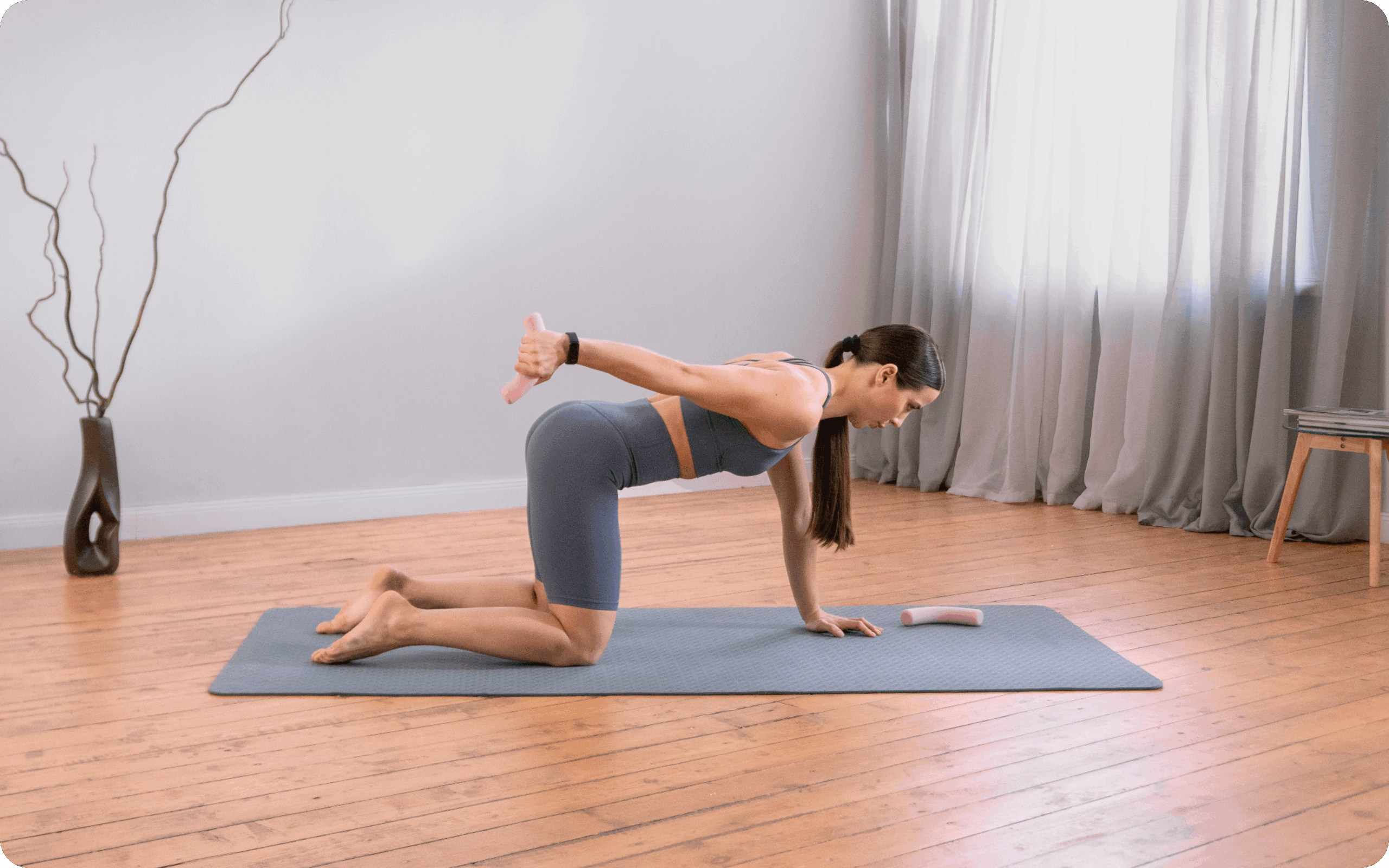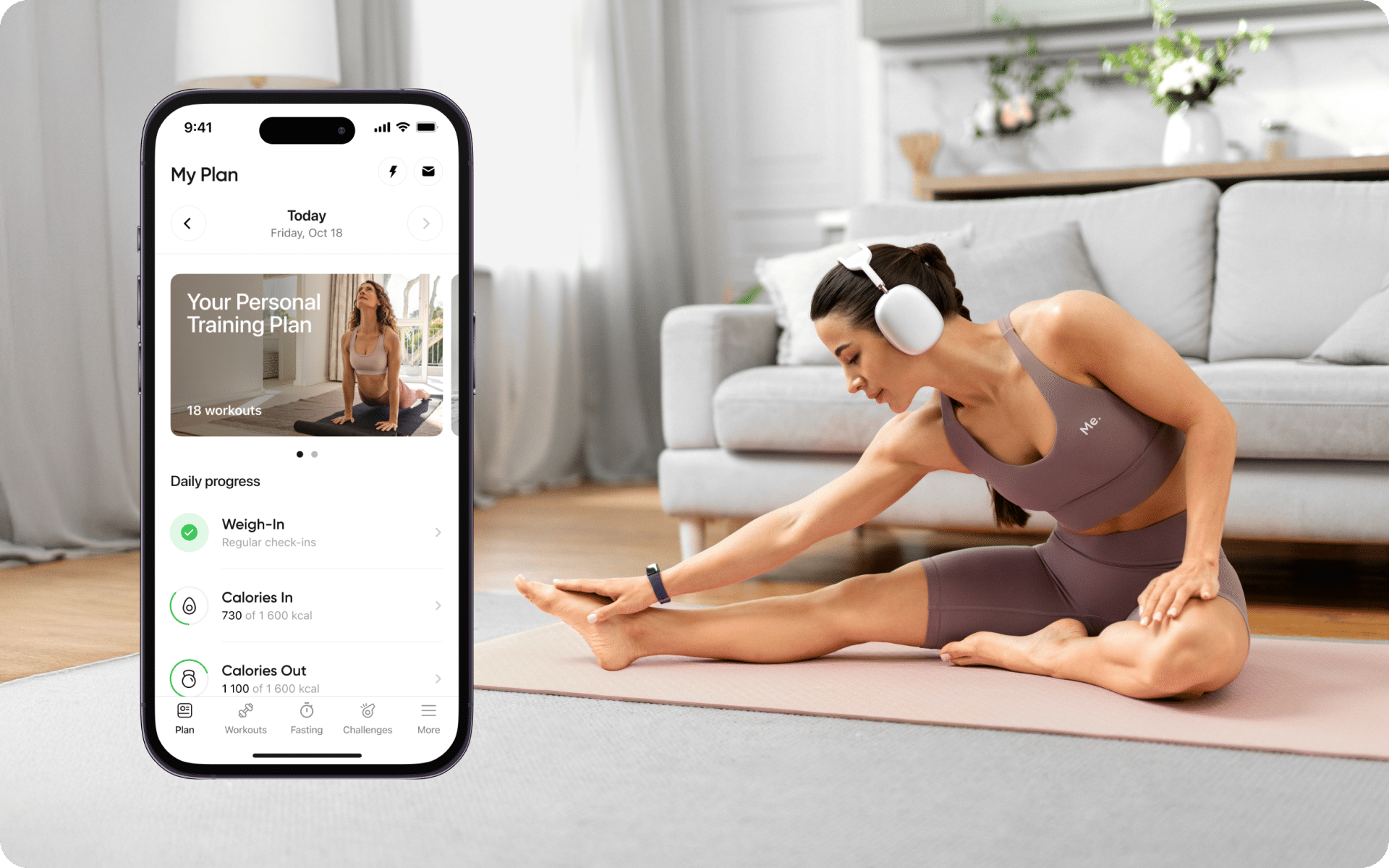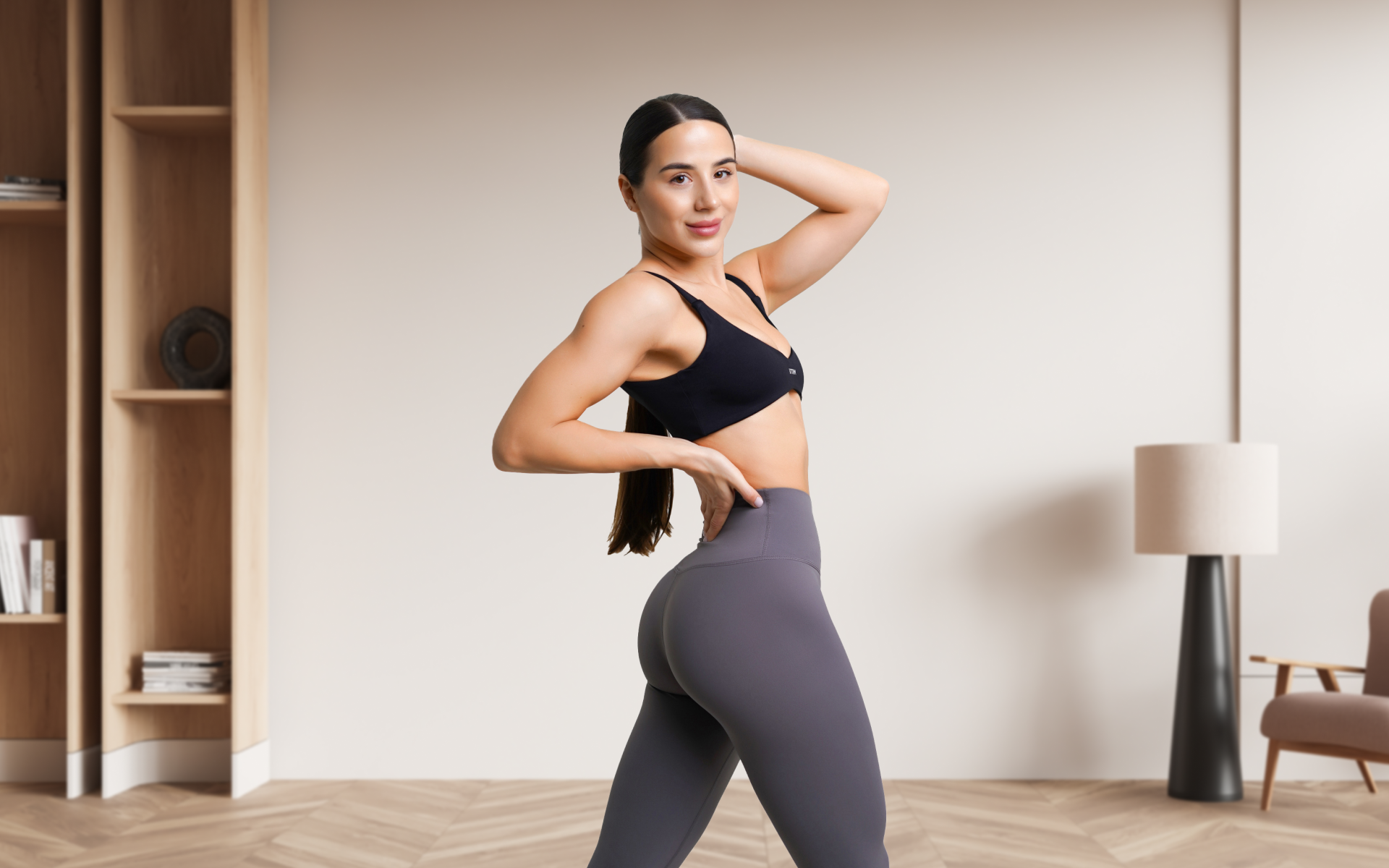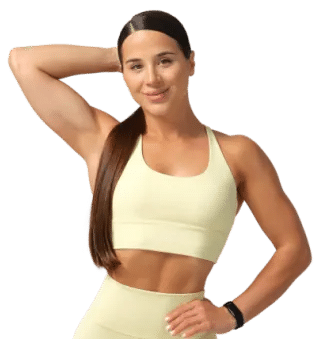Training effectively doesn’t require spending hours in the gym every day. A well-structured, evidence-based approach can deliver significant results in muscle growth, strength, and body composition with just a few sessions per week. A 3-day full-body workout plan is one of the most efficient and sustainable ways to achieve your fitness goals, particularly when you have limited time or equipment.
This article will break down the science behind why a three-day routine works so well. You will learn how to structure your training for optimal progress, and you’ll get a complete 3-day full-body workout plan with dumbbells that you can start today from home. We will cover everything from exercise selection to progression strategies, all grounded in recent sports science research.
Is 3 Days Good for Working Out?
Yes, working out three days a week is an excellent frequency for most individuals to build muscle, increase strength, and improve overall health. Training three times per week provides a potent stimulus for your muscles to adapt and grow (1). More importantly, it allows for adequate recovery between sessions, which is when the actual physiological changes, such as muscle repair and growth, occur (2).
This frequency strikes a perfect balance between stimulating progress and preventing overtraining. Each workout session can be intense and focused, knowing you have a full day of rest afterward. For both beginners and experienced lifters, a 3-day-a-week schedule is a highly effective and sustainable approach to long-term fitness.
Can I Build Muscle in 3 Days a Week?
Absolutely. You can build a significant amount of muscle training only three days a week, as long as your program is designed correctly.
Muscle hypertrophy, or growth, is primarily driven by creating sufficient mechanical tension and metabolic stress during your workouts. As long as the total weekly training volume – the combination of sets, reps, and weight – is high enough, your muscles will receive the signal they need to grow (3).
Recent research has consistently shown that when total weekly volume is equated, there’s little to no difference in muscle growth between training three days a week with a full-body routine and training more frequently with a split routine (4).
A 3-day schedule allows you to hit each major muscle group with enough intensity and volume to stimulate hypertrophy effectively.
Pairing this stimulus with adequate protein intake (around 1.6–2.2 grams per kilogram of body weight) and sufficient sleep (7–9 hours per night) creates an optimal environment for muscle development (5, 6).
BetterMe: Health Coaching app helps you achieve your body goals with ease and efficiency by helping to choose proper meal plans and effective workouts. Start using our app and you will see good results in a short time.
Is a 3-Day Full-Body Workout Effective?
Yes, a 3-day full-body workout is exceptionally effective for achieving a wide range of fitness goals. This training style involves working all major muscle groups – chest, back, shoulders, legs, and arms – in each session. By training the entire body three times per week, you create multiple opportunities for muscle protein synthesis (the process of rebuilding muscle fibers) (7). This frequent stimulation can lead to consistent gains in both strength and size.
Furthermore, recent randomized controlled trials suggest that full-body workouts may have an advantage for fat loss (8).
Engaging more muscle mass in a single session leads to a greater overall energy expenditure compared to workouts that isolate smaller muscle groups. This higher calorie burn, repeated across the week, can contribute to more significant reductions in total body fat and regional fat mass over time (8).
For anyone who is looking for a time-efficient and highly productive training method, a 3-day full-body workout plan for beginners and seasoned lifters alike offers a powerful solution.
To learn more about different training frequencies, you can explore other options for a 3-day-a-week workout.
How to Structure a 3-Day Full-Body Split
Structuring a 3-day full-body split is straightforward and should prioritize efficiency, recovery, and progression. The goal is to create three challenging yet manageable workouts you can perform consistently.
The most common and effective way to schedule this is with a day of rest between each session, such as Monday, Wednesday, and Friday. This 48-hour gap provides ample time for your muscles and nervous system to recover.
Here is how to build your 3-day full-body workout split:
- Prioritize Compound Movements: Each workout should be built around compound exercises. These are multi-joint movements that engage multiple muscle groups at once, such as squats, deadlifts, rows, and presses. They provide the most bang for your buck in terms of stimulating muscle growth and burning calories (9).
- Select Key Movement Patterns: To ensure a balanced workout, include an exercise from each of the following categories in every session:
- Upper-Body Push: (e.g. dumbbell bench press, overhead press)
- Upper-Body Pull: (e.g. dumbbell row, chin-up)
- Lower-Body Squat/Press: (e.g. goblet squat, lunges)
- Lower-Body Hinge: (e.g. Romanian deadlift, hip thrust)
- Add Accessory Exercises: After your main compound lifts, you can add 1-2 accessory or isolation exercises to target smaller muscle groups such as the biceps, triceps, or calves. This helps add extra volume where needed without causing excessive fatigue.
- Vary the Workouts: While you can perform the same workout three times a week, you may get better results and stay more engaged by slightly varying the exercises or rep schemes across the three days (10).
For example, Day 1 could focus on lower-rep strength work, while Day 3 could use higher reps to focus on metabolic stress.
This structure ensures you hit every muscle group with sufficient frequency and volume to drive progress. It’s a foundational approach that is used in many effective strength programs, including a 3-day full-body workout plan with weights.
Read more: Calisthenics Daily Workout Plan: Push, Pull, and Legs Split
What Is a Strengthening 3-Day Full-Body Workout Plan?
A strengthening 3-day full-body workout plan is a routine that is specifically designed to maximize gains in muscular strength and size using just three training days per week.
This at-home plan requires only a pair of adjustable dumbbells, which makes it accessible for just about everyone. It integrates modern training principles such as rate of perceived exertion (RPE) and double progression to ensure you’re consistently challenging yourself.
The plan consists of three distinct workouts (Workout A, Workout B, and Workout C) performed on non-consecutive days.
Key Principles of the Program:
- Rate of Perceived Exertion (RPE): Instead of training to failure on every set, you will aim for a specific RPE. RPE is a scale from 1-10 that measures how difficult a set feels.
An RPE of 7 means you feel you have 3 reps left in the tank; RPE 9 means you have 1 rep left. This auto-regulates your training, ensuring you work hard enough without accumulating excessive fatigue (11)
- Double Progression: This is a simple but powerful way to ensure long-term progress. First, you aim to add reps to your sets within a given rep range (e.g. 8-12). Once you can hit the top of the rep range for all sets with good form, you then increase the weight.
- Tempo: The tempo (e.g., 3-1-1-0) dictates the speed of each phase of the lift. The first number is the eccentric (lowering) phase, the second is the pause at the bottom, the third is the concentric (lifting) phase, and the fourth is the pause at the top. A controlled tempo increases time under tension, a key driver of hypertrophy (12).
- Rest: Rest periods are prescribed to allow for sufficient recovery between sets, enabling you to maintain performance quality (13).
The 3-Day Full-Body Workout Plan with Dumbbells
Perform each workout once per week on non-consecutive days (e.g. Monday, Wednesday, Friday).
Workout A
| Exercise | Sets | Reps | Tempo | Rest | RPE |
|---|---|---|---|---|---|
| 1. Goblet squat | 3 | 8-12 | 3-1-1-0 | 90s | 8 |
| 2. Dumbbell bench press | 3 | 8-12 | 3-1-1-0 | 90s | 8 |
| 3. Bent over dumbbell row | 3 | 8-12 | 2-0-1-1 | 90s | 8 |
| 4. Dumbbell lateral raise | 2 | 12-15 | 2-0-1-1 | 60s | 9 |
| 5. Dumbbell hammer curl | 2 | 10-15 | 2-0-1-0 | 60s | 9 |
| 6. Overhead triceps extension | 2 | 10-15 | 3-0-1-0 | 60s | 9 |
| Exercise | Sets | Reps | Tempo | Rest | RPE |
|---|---|---|---|---|---|
| 1. Dumbbell Romanian deadlift | 3 | 8-12 | 3-1-1-0 | 90s | 8 |
| 2. Dumbbell overhead press | 3 | 8-12 | 2-0-1-0 | 90s | 8 |
| 3. Dumbbell split squat | 3 | 10-15 per leg | 2-1-1-0 | 90s | 8 |
| 4. Single arm dumbbell row | 3 | 8-12 per arm | 2-0-1-1 | 90s | 8 |
| 5. Dumbbell floor press | 2 | 10-15 | 3-0-1-0 | 60s | 9 |
| 6. Glute bridge | 2 | 15-20 | 2-0-1-2 | 60s | 9 |
| Exercise | Sets | Reps | Tempo | Rest | RPE |
|---|---|---|---|---|---|
| 1. Dumbbell front squat | 3 | 8-12 | 3-1-1-0 | 90s | 8 |
| 2. Incline dumbbell bench press | 3 | 8-12 | 3-1-1-0 | 90s | 8 |
| 3. Pull-ups (or dumbbell pullover) | 3 | As many as possible | 3-1-1-0 | 90s | 8 |
| 4. Dumbbell step-up | 3 | 10-12 per leg | 2-0-1-0 | 90s | 8 |
| 5. Dumbbell bicep curl | 2 | 10-15 | 2-0-1-0 | 60s | 9 |
| 6. Plank | 2 | Hold for max time | N/A | 60s | 10 |
This plan is a great example of a complete 3-day full-body workout plan at home that requires minimal equipment while delivering maximum results.
If you’re interested in exploring programs that focus on specific body parts, consider looking into a 3-day split workout.
Do You Need to Lift Heavy to Build Muscle?
No, you don’t exclusively need to lift heavy to build muscle. While lifting heavy weights in lower rep ranges (e.g. 1-6 reps) is superior for building maximal strength (14), muscle growth can be achieved across a wide spectrum of rep ranges.
Research has repeatedly demonstrated that lifting lighter weights for higher repetitions (up to 30-40 reps) can stimulate similar muscle growth as lifting heavy weights, as long as the sets are taken close to muscular failure (15).
The primary driver of hypertrophy is mechanical tension (3). This tension can be generated by lifting a heavy load for a few reps or by lifting a lighter load for many reps until the targeted muscles are highly fatigued. The latter method creates significant metabolic stress, which is another key contributor to hypertrophy (3).
A well-rounded program, such as the 3-day plan provided here, incorporates a mix of moderate rep ranges (8-15 reps) (14). This approach balances mechanical tension and metabolic stress, offering a powerful stimulus for muscle growth while being less taxing on the joints and central nervous system than constant heavy lifting.
Read more: 6 Compound Exercises for Women to Build Strength and Transform Their Bodies
What Are the Disadvantages of a Full-Body Workout?
While a full-body workout is highly effective, it may have a few potential disadvantages depending on your goals and training level. The primary drawback is that it can be challenging to accumulate extremely high training volume for a specific muscle group. If you’re an advanced bodybuilder aiming to bring up a lagging body part, dedicating an entire session to that muscle group in a split routine may be more effective.
Another consideration is per-session fatigue. As you’re training your entire body, workouts can be systemically demanding. By the time you get to the last few exercises in a session, your energy levels may be low, potentially compromising the quality of those sets. This requires smart programming to place the most demanding compound exercises at the beginning of the workout (16).
Finally, individuals who enjoy the feeling of a significant “pump” in a specific muscle may find full-body sessions less psychologically satisfying. Split routines allow for a greater focus and localized fatigue in one or two muscle groups, which many find motivating. However, for the vast majority of people focused on general strength, muscle gain, and fat loss, the advantages of a full-body routine far outweigh these minor drawbacks.
For those who are looking to maximize strength with a variety of programming options, there are many effective 3-day weight lifting routines available.
The calves and forearms are notoriously the slowest muscles to grow for many individuals. Their slow growth is often attributed to a combination of factors, including their high proportion of slow-twitch muscle fibers, which have less growth potential than fast-twitch fibers, and their constant daily use, which makes them resistant to typical training stimuli (17). To gain muscle, the most important thing to drink would be water. Water is essential for hydration, nutrient transport, and overall cell function, all of which are essential for muscle repair and growth (18). Other drink options could include a protein shake. Protein shakes are typically made with whey or casein powder and they can be an efficient way to supply your body with the amino acids needed to rebuild muscle tissue, especially after a workout. Or even a hydration drink that’s high in electrolytes. Regardless of your drink of choice, it’s very important to contact a medical professional before getting started on any dietary supplement. Whether it be a protein powder, hydration drink, preworkout, etc., it’s essential that you work with your doctor to see if this is right for you. Yes, four exercises can be enough for an effective full-body workout, as long as they’re well-chosen compound movements. A routine that consists of a squat variation, a hinge movement, an upper-body push, an upper-body pull, and targeted core work will stimulate nearly every major muscle group in the body, which makes it a highly efficient workout. If you had to choose only one exercise for the entire body, the deadlift is arguably the best. It engages the posterior chain (hamstrings, glutes, back), quads, core, and upper back, which makes it a true full-body strength builder. However, a balanced program should always include a variety of movements.
Frequently Asked Questions
What is the slowest muscle to grow?
What should I drink to gain muscle?
Are 4 exercises enough for a full-body workout?
Which exercise is best for full-body training?
The Bottom Line
A well-structured 3-day full-body workout plan with dumbbells is more than just a time-saver, it’s a focused approach that leverages the latest in exercise science to help you train smarter, not harder. With thoughtful programming and consistency, you can challenge every major muscle group, make measurable progress, and adapt the routine to your needs over time.
By bringing strength training into your home with simple equipment, you create space for measurable change, without overwhelming your schedule or resources. Use these principles to build a training habit that evolves with you and supports your goals at every stage.
DISCLAIMER:
This article is intended for general informational purposes only and does not serve to address individual circumstances. It is not a substitute for professional advice or help and should not be relied on for making any kind of decision-making. Any action taken as a direct or indirect result of the information in this article is entirely at your own risk and is your sole responsibility.
BetterMe, its content staff, and its medical advisors accept no responsibility for inaccuracies, errors, misstatements, inconsistencies, or omissions and specifically disclaim any liability, loss or risk, personal, professional or otherwise, which may be incurred as a consequence, directly or indirectly, of the use and/or application of any content.
You should always seek the advice of your physician or other qualified health provider with any questions you may have regarding a medical condition or your specific situation. Never disregard professional medical advice or delay seeking it because of BetterMe content. If you suspect or think you may have a medical emergency, call your doctor.
SOURCES:
- Effects of Resistance Training Frequency on Measures of Muscle Hypertrophy: A Systematic Review and Meta-Analysis (2016, link.springer.com)
- The Importance of Recovery in Resistance Training Microcycle Construction (2024, pmc.ncbi.nlm.nih.gov)
- Anabolic signals and muscle hypertrophy – Significance for strength training in sports medicine (2025, sciencedirect.com)
- Equal-Volume Strength Training With Different Training Frequencies Induces Similar Muscle Hypertrophy and Strength Improvement in Trained Participants (2022, frontiersin.org)
- Systematic review and meta-analysis of protein intake to support muscle mass and function in healthy adults (2022, pubmed.ncbi.nlm.nih.gov)
- Sleep and muscle recovery: Endocrinological and molecular basis for a new and promising hypothesis (2011, sciencedirect.com)
- Resistance training increases myofibrillar protein synthesis in middle-to-older aged adults consuming a typical diet with no influence of protein source: a randomized controlled trial (2025, sciencedirect.com)
- Full-body resistance training promotes greater fat mass loss than a split-body routine in well-trained males: A randomized trial (2024, onlinelibrary.wiley.com)
- Benefits of Compound Exercises (2016, acefitness.org)
- Adding Variety to Your Exercise Program (2020, uhhospitals.org)
- Rated Perceived Exertion (RPE) Scale (2023, my.clevelandclinic.org)
- The Influence of Movement Tempo During Resistance Training on Muscular Strength and Hypertrophy Responses: A Review (2021, link.springer.com)
- Give it a rest: a systematic review with Bayesian meta-analysis on the effect of inter-set rest interval duration on muscle hypertrophy (2024, frontiersin.org)
- Loading Recommendations for Muscle Strength, Hypertrophy, and Local Endurance: A Re-Examination of the Repetition Continuum (2021, mdpi.com)
- Muscle Failure Promotes Greater Muscle Hypertrophy in Low-Load but Not in High-Load Resistance Training (2022, ingentaconnect.com)
- Exercise order in resistance training (2012, pubmed.ncbi.nlm.nih.gov)
- Do the anatomical and physiological properties of a muscle determine its adaptive response to different loading protocols? (2020, pmc.ncbi.nlm.nih.gov)
- Hydration to Maximize Performance and Recovery: Knowledge, Attitudes, and Behaviors Among Collegiate Track and Field Throwers (2021, pmc.ncbi.nlm.nih.gov)

